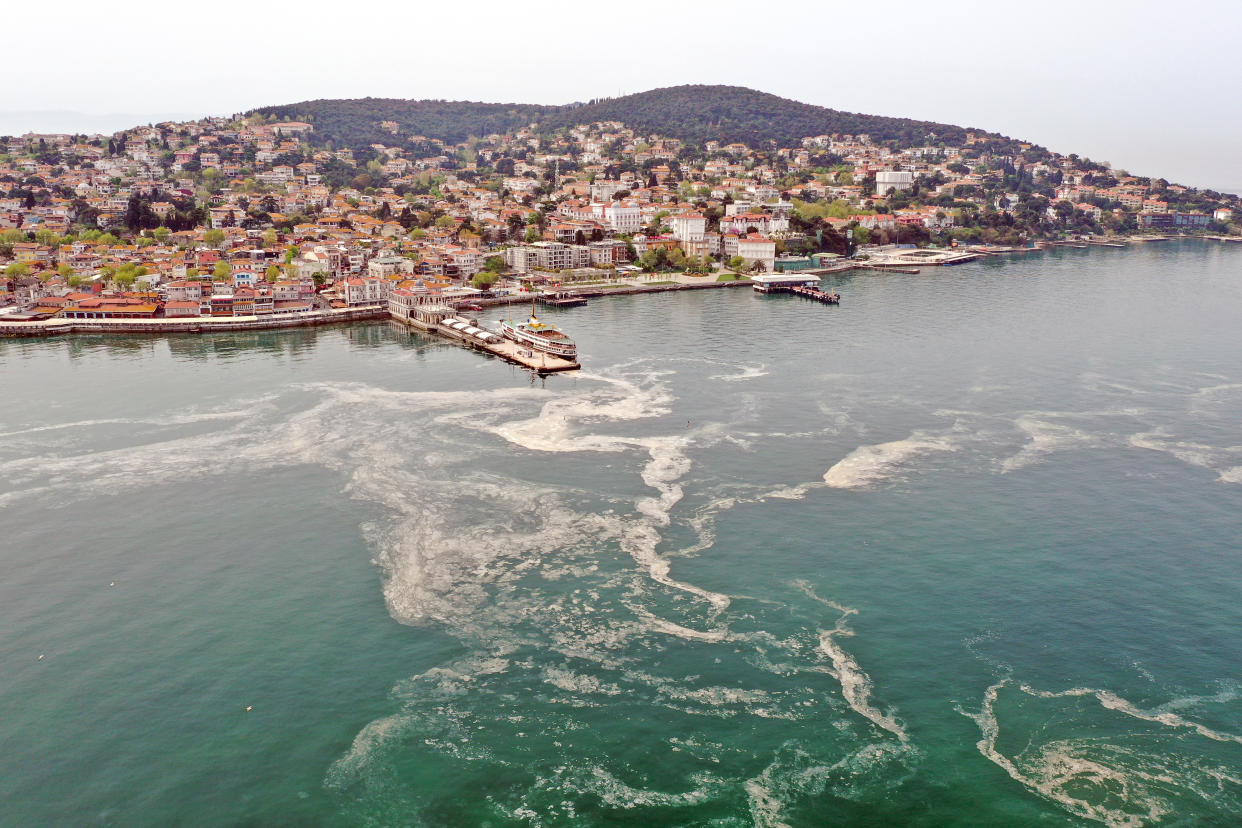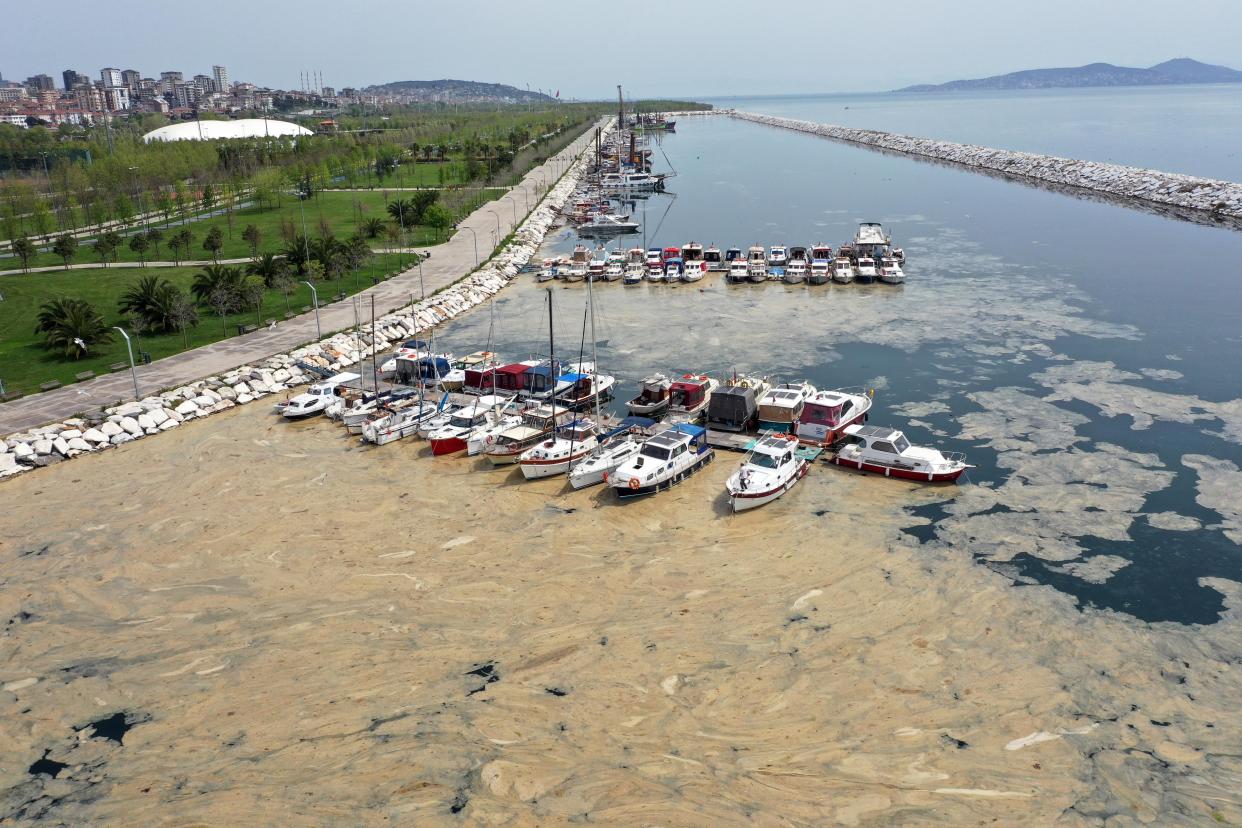‘Sea snot’ caused by climate change is spreading over seas in Turkey

A sticky, mucus-like substance known as "sea snot" has spread over the surface of waters in Turkey – and experts believe it has been sparked by climate change.
The thick beige gloop is spreading across the surface of the Sea of Marmara, where it first began spreading in 2007.
The "snot" is formed when phytoplankton grow out of control in warm conditions, The Guardian reported.
It is created when waters rich in nutrients from untreated sewage are heated by warmer waters, experts believe.
Locals fear the slime may have effects on tourism, fishing and human health.
Watch: How Systemic Racism Affects the Trees in Your Neighborhood
Read more: A 1988 warning about climate change was mostly right
Speak to the Daily Sabah, Mustafa Sarı, maritime faculty dean of Bandırma Onyedi Eylül University, said: "The increase in the number of elements such as nitrogen and phosphorus in the sea is largely related to domestic waste such as sewage.
"Domestic waste released into the sea without treatment increases the nitrogen and phosphorus load of the seawater.
“The sea snot resulting from this excessive proliferation is generally seen from 16 feet to a depth of 98 feet.”

The slime in itself is not harmful, experts say, but in large quantities, it can harm marine life.
Dr Neslihan Özdelice, a marine biologist at Istanbul University, said: “What we see is basically a combination of protein, carbohydrates and fat.
“The main trigger is warming related to climate change, as phytoplankton grow during higher temperatures.”
Özdelice says seawater has warmed by 2-3C since preindustrial times.
The sea snot is not the only troublesome slime around the world.
Read more: Why economists worry that reversing climate change is hopeless
Melting snow in the Himalayas has led to enormous growth of a "green slime" in the Arabian sea, swirls of which are now visible from space.
Research published in Nature’s Scientific Reports used Nasa satellite imagery to track the growth of the planktonic organism Noctiluca scintillans in the Arabian sea.
The organism was unheard of 20 years ago, but the huge blooms have grown to such an extent that it has disrupted the food chain and could threaten fisheries.
The millimetre-size planktonic organism has forced out the photysynthesisising plankton that used to support life in the area.
Watch: One small step - can seaweed save the climate?


